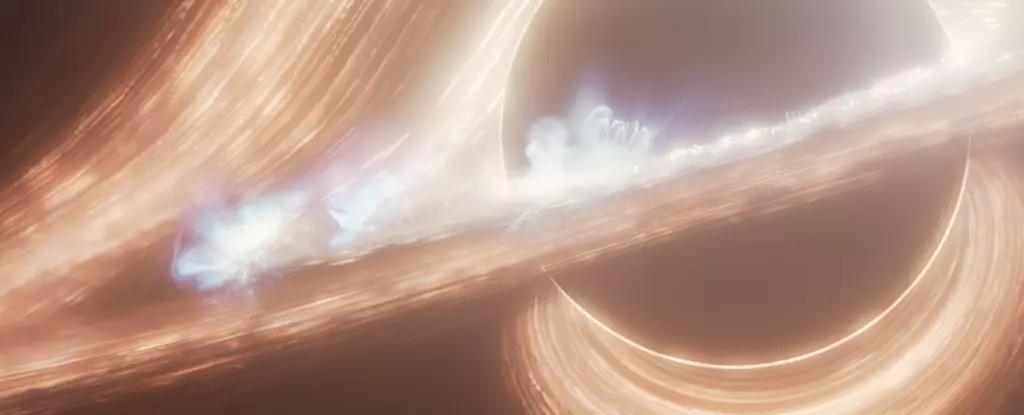In the vast expanse of the cosmos, supermassive black holes serve as enigmatic beacons of gravitational extremes and dynamic processes. At the heart of our Milky Way galaxy lies Sagittarius A*, a supermassive black hole that, while not as ravenous as its counterparts scattered throughout the universe, has recently captured the attention of astronomers through its dynamic surroundings. Utilizing the advanced capabilities of NASA’s James Webb Space Telescope (JWST), researchers have uncovered a remarkable spectacle of cosmic activity—characterized by fluctuations in brightness and the occurrence of energetic flares emanating from the region enveloping this colossal black hole.
Researchers led by Farhad Yusef-Zadeh from Northwestern University undertook an extensive observational campaign utilizing JWST’s Near-Infrared Camera (NIRCam). Over the span of a year, the team dedicated approximately 48 hours to scrutinize Sagittarius A*, dissecting the patterns and characteristics of these cosmic flares. They documented an eye-opening discovery: this supermassive black hole not only exhibits sporadic bursts of brightness but does so with a frequency of five to six significant flares daily, interspersed with numerous smaller emissions.
The temporal variability of these flares offers tantalizing clues to the underlying astrophysical processes at play. Yusef-Zadeh noted the unexpected nature of the observations, marveling at the absence of a discernible pattern in the flares’ activity. “It appears random,” he remarked, underscoring the fascinating complexity of this cosmic environment.
Two primary processes appear to contribute to the observed flaring phenomena around Sagittarius A*. The first mechanism involves turbulence within the accretion disk—a swirling mass of hot, magnetized gas that surrounds black holes. This turbulence compresses the gas, leading to explosive events akin to solar flares experienced on our Sun. Yusef-Zadeh draws parallels to solar dynamics, stating that while the principles are similar, the extreme conditions surrounding a black hole amplify the intensity and alter the dynamics substantially.
The second mechanism pertains to magnetic reconnection, a phenomenon wherein colliding magnetic fields release energy in the form of particles propelled at near-light speeds. Yusef-Zadeh conveys this process using an analogy to static electricity—an enlightening way to conceptualize the explosive nature of magnetic interactions in such an energetic environment.
One of the most intriguing revelations from the observations is related to the temporal dynamics of the light emitted by the flares. When analyzed through two distinct near-infrared wavelengths, the data revealed a time delay in the flares’ brightness fluctuations. Shorter wavelength emissions brightened momentarily before the longer wavelengths followed suit, revealing a lag of a few seconds to as much as 40 seconds.
This observation raises compelling queries regarding the physical behaviors of particles within the accretion disk. Yusef-Zadeh suggests that this delay could indicate varying energy dissipation rates among particles—a trait reminiscent of cosmic synchrotron processes. Such insights could offer a richer understanding of the complex interactions occurring in this dynamic region of space.
As researchers look ahead, the potential for extended observation time on JWST could serve as a turning point in this inquiry. Increased observational duration could minimize noise interference, enabling scientists to discern previously hidden features and phenomena. “When you are looking at such weak flaring events, you have to compete with noise,” Yusef-Zadeh explains, emphasizing the need for clearer data to illuminate the intricacies surrounding Sagittarius A*.
Continued investigation into these cosmic fireworks not only promises to enhance our understanding of black holes but also provides broader insights into the nature of matter and energy in one of the universe’s most extreme environments. With every observation, Sagittarius A* reveals more aspects of its complex nature, inviting astronomers to delve deeper into the cosmic mystery that lies at the heart of our galaxy.


Leave a Reply